You are here
Southern Altai ridge.
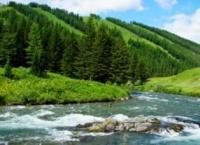
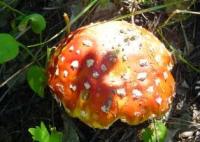
Trekking in Kazakhstan.
“The Altai Mountains revealed themselves in all their beauty: around us, like the frozen giant waves of the Ocean, the mountains rose into the boundless space, in places in gorges, overgrown with forest, in places rocky, but mostly covered, like a carpet, with thick grass and flowers. The higher we climbed into the mountains, the colder it became.”
L.K. Poltoratskaya. "A Trip Along the Chinese Border from Altai to Tarbagatai". 1870.
Tours & travel Kazakhstan.
Southern Altai Ridge is located in eastern part of Kazakhstan at an altitude of 2,219 to 3,650 meters above sea level, is located on territory of Kazakhstan for 95 kilometers, then along main ridge there is a border between Republic of Kazakhstan and Republic of China for 20 kilometers. Then from north adjoins the border with the Russian Federation and stretches along ridge for 40 kilometers to its eastern end in Katon-Karagay Nature Park, in Katon-Karagay district, in east of East Kazakhstan region.
The western end of the Southern Altai Ridge borders on the Karakoba River Valley and the Alatai Mountains, in the north it borders on the southern spurs of the Katunskie Belki Ridge, in the western part with the northern spurs of the Tarbagatai Ridge.
In the south it borders on the Kyzyl-Kezen Mountains, the vast Arasan Valley and the Akkaba River Valley. The eastern part of the range is located on the territory of the Russian Federation and the Republic of China. The Southern Altai Ridge stretches in the latitudinal direction for 155 kilometers.
Orography of Southern Altai of Kazakhstan.
For Altai, as a mountain system, vast plateaus are very characteristic. The heart of Altai is called the high mountain plateau Ukok 2300 - 2500 meters above sea level with numerous mountain ranges diverging in all directions. The flat, wavy peaks of the plateau are combined with numerous basins in which small lakes, mountain swamps or hollows have formed.
Not far from the Kanas mountain pass, the eastern border of Kazakhstan passes, it crosses the plateau in the western part, near the upper reaches of the Belaya Berel River it reaches the Katun Alps, passes by Mount Muztau (Belukha) - the highest two-headed peak of Altai with a height of 4499.6 meters above sea level, whitened eternal snows and glaciers.
To the south of the Ukok plateau and the Bukhtarma valley lies a whole system of mountain ranges - this is the Southern Altai. On the wooded, with steep slopes, at a height of 2300 - 3400 meters above sea level, the ridge of the Southern Altai, there are sharp transitions of the steppe vegetation into the forest dominant on the southern slopes.
The Southern Altai Ridge, in turn, passes to the south into the Tarbagatai North Ridge with a height of 2200 - 3000 meters above sea level and the Sarytau Ridge. In the north, the Southern Altai passes into the Sarymsakty mountains with a height of 3000 to 3400 meters above sea level, from which the Kurchum Range branches off, bordering the Zaisan basin in the southern spur.
The Kurchum ridge, together with the Jety-Kizen mountains, constitutes the middle branch of the Southern Altai, or its southern chain, the link of which limits Lake Markakol from the southeast. In general, the mountainous relief of the Southern Altai, especially at an altitude of 2000 meters above sea level, is characterized by excessive dissection and a large depth of erosion incision with heights up to 1700 - 1800 meters above sea level.
Relic glaciers are still preserved here, manifesting themselves in the form of typical forms characteristic of high mountains. Most of the ranges of the Southern Altai are characterized by an asymmetric structure: the northern and northeastern slopes are short and steep, while the southern and southwestern slopes are more gentle.
The exception is the Kurchum Range, which has steeper and shorter slopes in the southwestern part, facing the southeast.
Lakes of Southern Altai in Kazakhstan.
At an altitude of 1495 meters above sea level, between the Sarytau and Azutau ridges, there is the most beautiful alpine lake of Altai - Markakol. It occupies a deep tectonic depression in the spurs of the Kurchum Range and is located at an altitude of 1447 meters above sea level.
This is the largest lake in Altai, a total of 27 large and small streams and rivers flow into it, and only one flows out - Kaldzhir. The depth of the lake is 27 meters with a transparency of 6 - 7 meters. Here is the Markakol State Reserve. On the southern slope of the Listvyaga ridge there is Lake Maralye (Chaban-Bai).
The Belaya River flows from it, flowing into Bukhtarma. Lake Yazovoe (Kara-Kul) is located in the forest belt at an altitude of 1656 meters above sea level. Rakhmanovskoye Lake is striking in its beauty, located among the steep wooded slopes of the mountains. at an altitude of 1760 meters above sea level.
Near it there are exits of thermal waters with a temperature of plus 22 - 43 degrees, in their healing qualities close to the waters of Tskaltubo and Belokurikha. A small river Arasan flows into the lake, 2.6 kilometers long, about 600 meters wide, and reaches a depth of 30 meters.
The color of all lakes is very variable depending on the weather. The gray-lead tones of the water from the heavy overcast sky are replaced by bright, ultramarine when the sun rises.
Rivers of Southern Altai in Kazakhstan.
Through these picturesque valleys among lush floodplain mixed forests flow clear rivers and rivulets of the Southern Altai. One of the largest rivers in Altai, belonging to the tributaries of the Irtysh, is the Bukhtarma, its length is 364 kilometers.
Born on the Kalbinsky Ridge, it noisily and victoriously rolls its waters through rocky gorges, past wooded shores, taiga villages, until it comes out into a wide valley. Forests are rafted along this ancient river, and lovers of water tourism willingly spend their free time here.
Another large river of the Southern Altai is the Narym, about 100 kilometers long, which flows into the Bukhtarma reservoir. Narym is of great irrigation importance. In the Irtysh, 112 kilometers below its exit from the Zaisan, another river of the Southern Altai flows - Kurchum, 200 kilometers long.
It flows through picturesque landscapes and is considered one of the most beautiful right tributaries of the Irtysh. From the Kurchum Range, the Kalguty River also flows into the Zaisan Basin, which flows into the Turangy-Kul Bay. In the south of Altai, the largest right tributaries of the Black Irtysh, the Kara-Kaba and Ak-Kaba, flow from the Sarymsakty mountains and flow through the Karakaba valley.
This valley, overgrown with islands of deciduous and mixed forests, with luxurious meadows, cut through by hasty rivers, with a string of white birches along the banks, closed by mountain ranges, leaves an indelible impression. Its open pastures have attracted the attention of nomadic pastoralists since ancient times.
Large intermontane depressions - Narymsko-Bukhtarma, Verkhne-Karabakinskaya, Bobrovskaya - were formed as a result of tectonic movements of the earth's crust. The Southern Altai of Kazakhstan covers a system of ridges. The more southerly geographical position in comparison with the Western Altai and the close proximity to the Zaisan basin determine well-pronounced drought-resistant variants of steppe vegetation, characteristic of the southern spurs of the Kurchum Range.
In this regard, the foothills have a somewhat dull look. On hot days, the sun heats up the rocks and rocky slopes, which makes them look completely purple. In the folds of the bare rocky mountains thickets of bushes darken - meadowsweet, wild rose and caragana.
In this part of the foothills there is a small relic grove of poplar, or turanga, in which the lower leaves are thin, lanceolate, the middle ones are somewhat larger, round, the upper ones are large and wide.
Flora of Southern Altai.
The forest belt of the Southern Altai of Kazakhstan occupies the upper limits of the mountains, up to 2300 - 2400 meters above sea level. The main forest-forming species here is Siberian larch, which is present in different types of forest formations.
In some places, pure leafbrushes are common, giving a special charm to mountain landscapes both in summer and at the time of leaf fall. It is no coincidence, apparently, that one of the ridges is named Listvyaga. Mixed cedar-larch forests with Siberian fir, spruce and hardwoods: birch, aspen and poplars are beautiful.
The belt of the upper forest of the local mountains is characterized by dryish steppe areas facing south. Thickets of Cossack, False Cossack and Siberian junipers are well developed here. These shrubs grow in separate, clumps and most often have a rounded shape.
At the time of wilting, on a yellow-brownish background of grassy spurs, flat-shaped dark spots of junipers become clearly visible. The flora of this region is rich, many endemics are found here. For example, in the spurs of the Azutau ridge, on Mount Marble, Keller's chamomile was found, which does not grow anywhere else on the planet, this plant has slightly jagged leaves, the flower is inconspicuous, dull.
Only Altai is characterized by such representatives of the flora found in the mountains of the southern part, as Altai and Ukok larkspurs, Potanin's gerbil, Altai onion and rhubarb. On the Azutau ridge, located south of Lake Markakol, mass hybridization of many types of cereals, onions and peonies known to all has been established.
This is due to a whole complex of natural conditions, Including the special geographical position of the region and contrasting climatic conditions. Larches occupy the rounded and steep slopes of the mountains. Sunlight, passing through the openwork crowns of trees, becomes thinner and softer and seems greenish.
Everywhere there are solitary thick-set cedars, their trunks in tight influxes, the crowns are frayed or “combed” to one side. And wherever you look, the crests of the ridges rise up to the horizon like snowy ramparts. Below, along the gorges and circuses, dips - gray placers of corums.
At the base of the rocks, cowering, stand dwarf cedars, disheveled larches, thickets of dwarf birch creep. An unforgettable impression is made by variegated, colored meadows in white placers of anemone narcissus flower, three-ribbed, chamomile, hairy schulzia, gerbil, menuartia, saxifrage and Siberian saxifrage.
Pleasing to the eye are yellow-orange buttercups and Altai lights, doronicums, bare-stalked and orange poppies, compact mytniks, lilacs, thermopsis, blue and blue curly large-flowered snakeheads, ruysha, large-flowered gentian, schwertia,
ltai violet and alpine asters.
West Siberian and Alpine kopeks, Altai cortuza, snow primrose, viviparous mountaineer, thick-leaved saxifrage, four-parted rhodiola stand out as bright spots. And everywhere there are streams, hollows, small rivers born at the lower edges of glaciers or snowfields.
Fauna of Southern Altai of Kazakhstan.
The fauna of the Southern Altai is rich and varied, there are many rare and endangered species of animals listed in the Red Book of the Republic. For example, endemic forms of uskucha, or lenok, grayling and gudgeon are found in Lake Markakol; in the foothills of the southern part of the Kurchum Range, a thin-tailed snake, a snake whose range is located in Manchuria and Korea, was recently caught.
Two hundred and fifty species of birds live here, many of them ecologically associated with either inland waters or dry rocky mountains: for example, white-tailed and osprey are piscivorous large predators. The black stork is common here. The black-headed gull, the largest gull, nests on the territory of the Markakolsky Reserve, goldeneye, long-nosed merganser, crested duck nest.
On dry mountain slopes, common keklik, rock pigeon, rock swallow and Mongolian bullfinch. High in the mountains lives the Altai Snowcock, listed in the Red Book. Alpine rocky cliffs are inhabited by the most beautiful representatives of the well-known family of crows - alpine jackdaw, red-billed jackdaw, or chough, redstart.
In the mountain forest-steppe, an endemic form of the gray shrike was found, and mountain bunting lives in the bushes. Here are preserved populations of large raptors listed in the Red Book - eagle, golden eagle, falcons - peregrine falcon and saker falcon.
A lot of mammals live here, in particular, in the south of Altai there is a rather large population of deer, the number of which reaches commercial importance. That is why the Katon-Karagaysky and Verkhne-Katunsky maral-breeding state farms were created in these places.
Male marals cut off antlers for the manufacture of pantocrine, a medicinal and tonic agent. Thirty percent of all pantocrine produced in the country falls on the share of two state farms located in the Kazakhstan Altai. On the ridges of Kurchum, Southern Altai, Tarbagatay, Narymsky, there are at least ten individuals of the snow leopard.
Occasionally there is a red wolf. On sheer cliffs, in gorges, a mountain goat is common - teke, on steep slopes - argali. In the taiga and the alpine zone, where groups of rocky outcrops meet, the smallest fanged deer, the musk deer, lives. Its number is growing every year.
Occasionally, a wild boar comes into the southern mountains from the Zaisan basin. The number of elk begins to gradually increase. Relative calm, good warming of the slopes, and hence their little snow, create favorable conditions for mass wintering of ungulates.
That is why a significant part of the roe deer population winters in the Southern Altai of Kazakhstan, living in the Western Altai of Kazakhstan, where the weather conditions are more severe and unfavorable. On screes in the forest zone with a fallen tree stand, a stone marten occasionally appears - an animal from the Red Book of Kazakhstan.
In the upper reaches of the Berel River, in winter, juniper grosbeaks, exotic for the mountains of this latitude, were repeatedly encountered, flying here for wintering from the Saura Mountains.
Geographic coordinates of Southern Altai Range: N49°07'49 E86°34'49
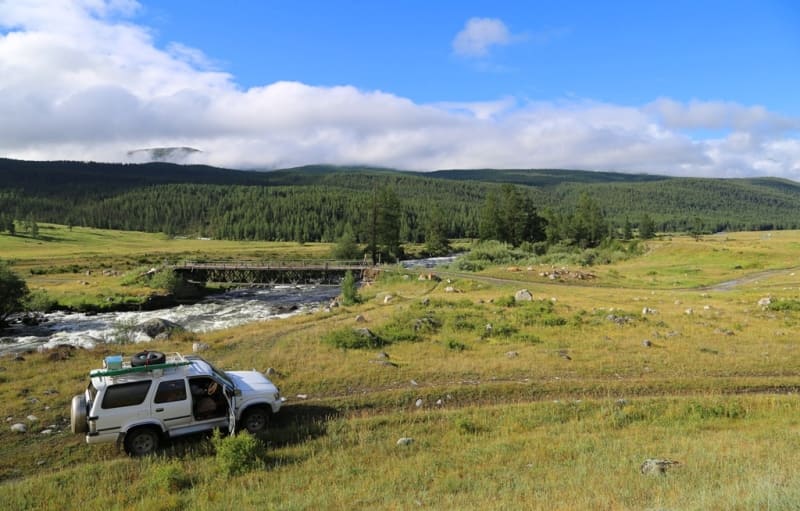
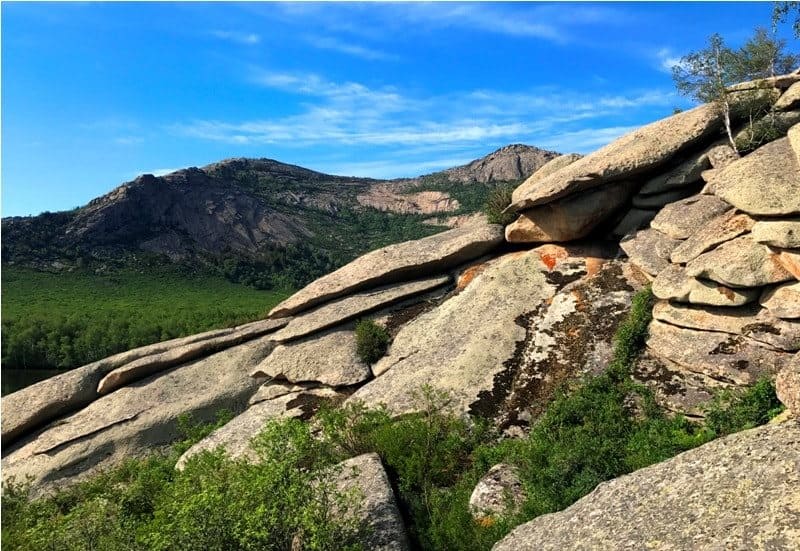


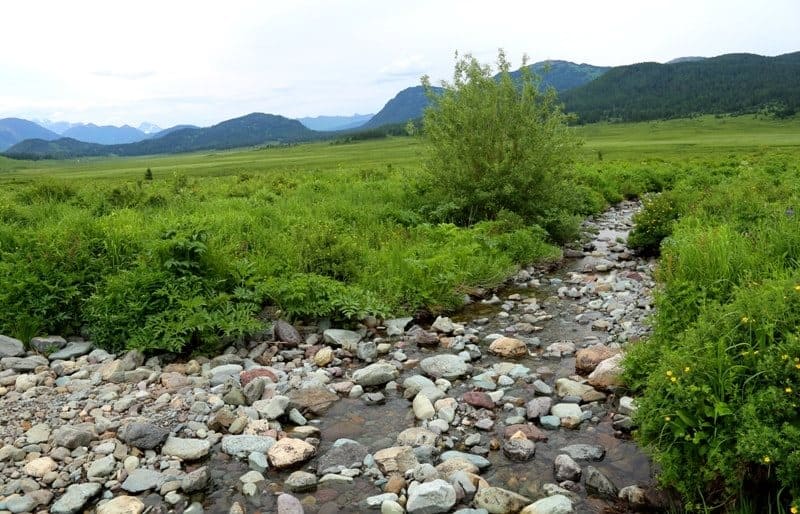
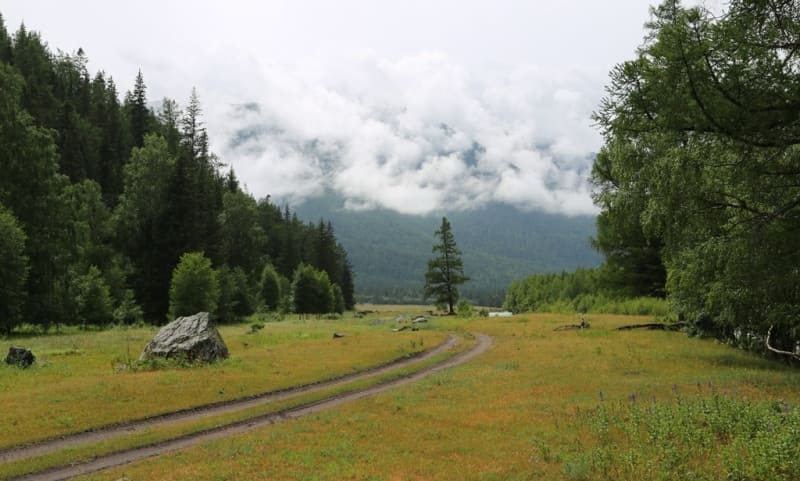


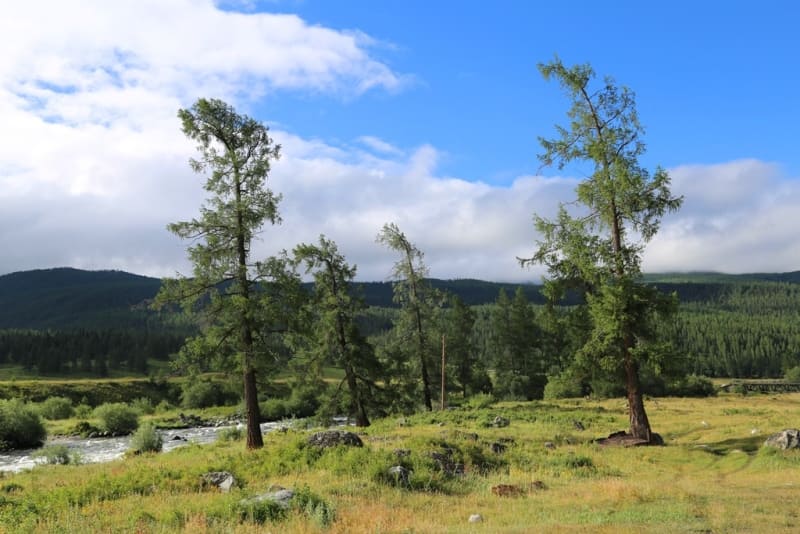

Authority:
"Altai of Kazakhstan", compiled by A.L. Kobozev, Alma-Ata, "Kainar", 1986.
Photos by:
Alexander Petrov.







